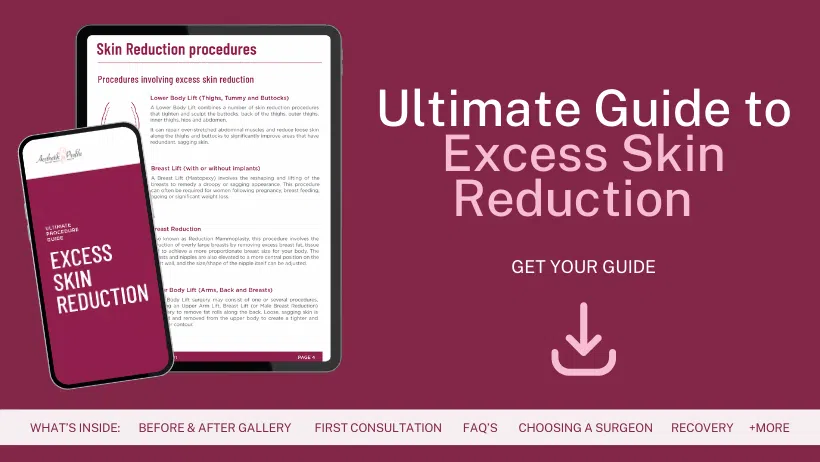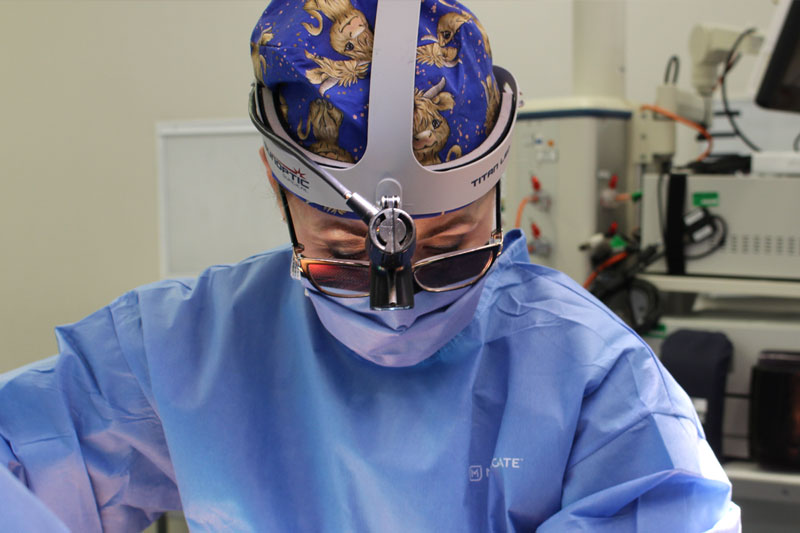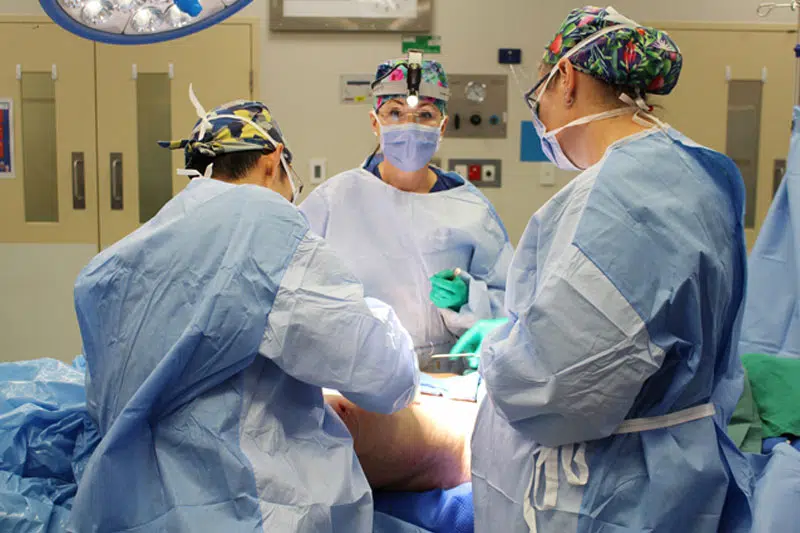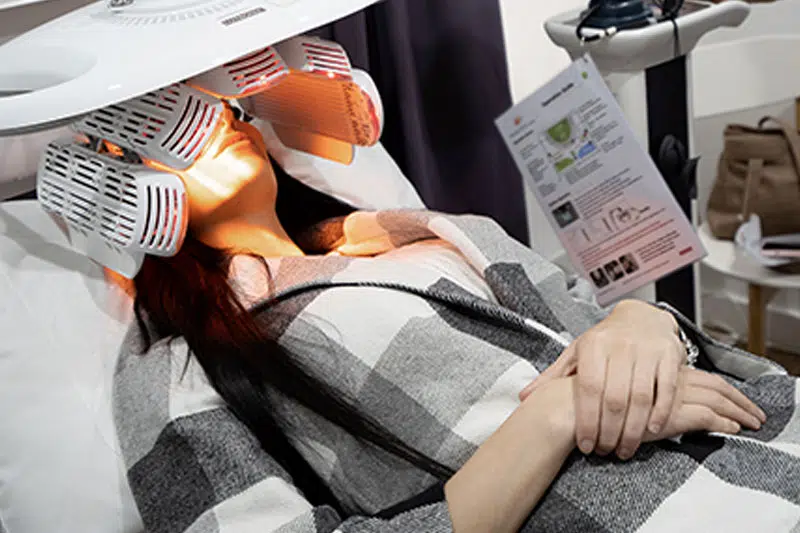Solutions for Loose Skin after Weight Loss
Have you ever wondered what happens to your skin when you lose a significant amount of weight? One of the most common issues you might face is the loss of skin elasticity, which often results in loose, sagging skin. This is not a cosmetic concern alone, but it can also affect your comfort, mobility, and overall wellbeing.
The skin, the largest organ in the body, is quite elastic. However, when it is stretched beyond its limit due to weight gain, it may find it challenging to revert to its original state, especially after significant weight loss. This can lead to excess loose skin.
Understanding the factors that influence the loss of skin elasticity is important. Keep in mind, every person’s body has its unique way of responding to weight loss, and various factors can influence how your skin changes.
Melbourne Specialist Plastic Surgeon Dr Carmen Munteanu is a talented and empathetic surgeon based in the eastern suburbs regularly performing excess skin removal surgery for post-weight loss patients.
Take our Plastic Surgery Quiz to find out if you’d be a good candidate and if you are ready for cosmetic surgery.
Factors that Influence the Loss of Skin Elasticity
The factors that influence the loss of skin elasticity after weight loss are many, and they often work together to determine the extent to which your skin might sag or loosen.
- Age is a significant factor. As you grow older, your skin naturally loses some of its elasticity due to the reduced production of collagen and elastin, proteins that keep your skin firm and flexible
- Your genetics also play a role. Some people are genetically predisposed to have more elastic skin than others, which can influence how your skin responds to weight loss
- Additionally, the length of time you were overweight and the amount of weight you lost can affect your skin’s elasticity. Rapid weight loss, for instance, might not give your skin enough time to adjust and shrink back to its smaller size
- Your lifestyle choices, including your diet and exercise habits, can also impact your skin’s elasticity. For instance, smoking can accelerate the ageing process and reduce skin elasticity, while a diet rich in vitamins, minerals, and proteins can help maintain it
What Causes Loose Skin After Weight Loss?
Now that you understand the factors that influence the loss of skin elasticity, you might be wondering, “what causes loose skin after weight loss?” Well, when you gain weight, your skin stretches to accommodate the extra fat. But when you lose weight, especially rapidly, your skin doesn’t have the chance to shrink back down at the same pace, leading to loose, sagging skin.
The extent of loose skin can also depend on where the fat was stored in your body. For instance, if you carried more weight around your stomach or hips, you might have more loose skin in these areas after weight loss. The age at which you lose weight can also influence the amount of loose skin. Older people may have less elastic skin due to natural ageing processes and may, therefore, experience more loose skin after weight loss.
Another contributing factor is the loss of fat volume that supported the skin. When this volume is lost, the skin can sag and appear loose. Additionally, weight fluctuations can cause stretching and relaxing of the skin over time, which can reduce its elasticity.
Excess loose skin after weight loss is not just a cosmetic issue; it can also cause physical discomfort. For instance, the excess skin might rub against other parts of your body, causing irritation, rashes, or even infections. It can also make physical activities, including exercise, more difficult and uncomfortable.
Surgery to Correct Loose Skin
Despite the availability of non-surgical treatments and natural remedies, surgery often plays a crucial role in addressing skin elasticity loss after significant weight loss. Surgical procedures like body contouring can provide visible and long-lasting results, making them a popular choice for individuals with a large amount of excess skin.
However, it’s important to note that surgery comes with its own risks and considerations, including potential complications, the need for recovery time, and cost. Therefore, it’s crucial to thoroughly discuss these factors with Dr Carmen before making a decision.
Let’s explore the different types of body-contouring surgeries available:
Abdominoplasty
Commonly known as a ‘tummy tuck,’ abdominoplasty is a surgical procedure that removes excess skin and fat from the abdomen. This procedure also restores weakened or separated muscles to create a smoother, firmer abdominal profile. If you have sagging or loose skin in your abdominal area after weight loss, this procedure can be an effective solution.
Lower-Body Lift
This procedure is intended to reshape the buttocks, hips, thighs, and abdomen. During a lower-body lift, Dr Carmen removes excess skin and lifts the remaining skin to improve its appearance. The result is a smoother, more toned lower body. It’s a comprehensive procedure that can significantly improve the look of your lower body after significant weight loss.
Upper-Body Lift
An upper-body lift is a surgical procedure that improves the appearance of the back and breasts. This procedure can be particularly beneficial for individuals who have lost a significant amount of weight and have excess skin in these areas. An upper-body lift removes excess skin and tightens the remaining skin, improving the overall contour of the upper body.
Thigh Lift
A thigh lift is a surgical procedure that reshapes the thighs by reducing excess skin and, in some cases, fat. This results in smoother skin and better-proportioned contours of the thighs and lower body. If you’ve lost a significant amount of weight and are dealing with loose skin on your thighs, this procedure could be a good option.
Brachioplasty
Also known as an arm lift, brachioplasty is a surgical procedure that reshapes the under portion of the upper arm, from the underarm region to the elbow. This procedure is effective in removing excess skin and fat deposits that often occur after major weight loss, leading to tighter, smoother skin and better-defined contours.
While surgery can be an option to address the problem of loose skin after weight loss, it’s not without risks and complications. Remember, every individual is unique, and what works best for one person may not be the best solution for another.
Download Dr Carmen’s Guide to Excess Skin Reduction

Non-Surgical Alternatives for Body Contouring
Some non-surgical body contouring procedures can help tighten loose skin and reduce stubborn fat deposits. These are often less invasive, require less downtime, but may need multiple sessions to achieve desired results.
- Radiofrequency treatments: Devices like Thermage use radiofrequency energy to heat the deep layers of the skin, promoting collagen production and skin tightening
- Ultrasound therapy: Ultherapy uses ultrasound energy to stimulate collagen production in the deeper layers of skin, leading to a lift and tightening effect over time
- Laser treatments: These treatments utilise infrared light to heat dermal collagen, leading to skin contraction and ultimately, skin tightening
- Cryolipolysis: Known commercially as CoolSculpting, this non-invasive procedure freezes fat cells beneath the skin. Once frozen, the body naturally eliminates the cells, leading to a reduction in fat layer thickness
Natural Remedies to Tighten Loose Skin
Alongside medical treatments, there are natural remedies that can help tighten loose skin after weight loss. For instance, maintaining a balanced diet rich in proteins, vitamins, and minerals can help support your skin’s health and elasticity. Regular exercise, particularly strength training, can help build muscle mass, which can fill out the space left by lost fat and reduce the appearance of loose skin.
Hydrating your skin regularly with moisturisers and drinking plenty of water can also help improve its elasticity. Additionally, avoiding harsh soaps and hot water can prevent your skin from drying out, which can further improve its elasticity.
Pros and Cons of Surgical and Non-Surgical Treatments
Both surgical and non-surgical treatments have their pros and cons. Surgical treatments can provide more visible and immediate results, but they also come with potential complications, recovery time, and higher costs. Non-surgical treatments, on the other hand, are generally safer and less invasive, but they might require multiple sessions over a longer period to achieve noticeable results.
In terms of natural remedies, while they are safer and affordable, they don’t provide the same level of results as medical treatments. Therefore, the optimal approach often involves a combination of treatments tailored to your specific needs and circumstances.
FAQs about Skin Elasticity Loss after Weight Loss and Body Procedures

What causes skin elasticity loss after significant weight loss?
- Sudden and substantial weight loss often leads to loose skin, which is primarily due to loss of elasticity. Skin is a flexible organ that can expand or contract to accommodate changes in body volume, such as during weight gain or pregnancy. However, when weight gain is significant or rapid, the skin’s elasticity might be overstretched and unable to bounce back after weight loss. Age, sun exposure, genetics, smoking, and poor nutrition can further diminish skin elasticity, leading to saggy skin after weight loss.
How can body contouring help with loose skin after weight loss?
- Body contouring is a term that encompasses a variety of surgical procedures designed to enhance the body’s shape by removing excess sagging skin and fat. Following major weight loss, body contouring can help improve the shape and tone of the underlying tissue that supports fat and skin, providing a smoother contour and better proportioned body. Procedures may include abdominoplasty (tummy tuck), mastopexy (breast lift), lower body lifts, upper arm lifts, and thigh lifts. The results are long-lasting, provided the patient maintains a stable weight and healthy lifestyle.
What is the recovery process like after body contouring surgery?
- The recovery process varies based on the procedure performed and the individual’s overall health. Generally, it includes a period of rest and limited movement to allow the body to heal. Most patients experience swelling, discomfort, bruising and skin colour changes, or slight skin numbness, but these symptoms usually lessen over time. Post-surgical care might involve wearing compression garments, taking prescribed medications, and attending follow-up visits. Full recovery and the final result of the surgery can take several months to a year to appear.
Are there any risks associated with body contouring surgeries?
- As with any surgery, body contouring has potential risks, including bleeding, infection, poor wound healing, changes in skin sensation, scarring, and complications related to anesthesia. Blood clots and damage to underlying structures are possible but rare.
How can I maintain the results of my body contouring surgery long-term?
- Maintaining the results of your body contouring surgery necessitates a long-term commitment to a healthy lifestyle. The most crucial step is to maintain a stable weight. Significant weight fluctuations can stretch your skin and negate the benefits of your body contouring surgery, making it important to incorporate a balanced diet and regular exercise into your routine. Hydration is also paramount as it plays a vital role in maintaining skin elasticity, so ensure you’re drinking enough water daily. Excessive sun exposure can damage skin and decrease its elasticity, so protect your skin by using sunscreen, wearing protective clothing, and avoiding the sun during peak hours. If you’re a smoker, it’s strongly recommended to quit before your surgery and continue abstaining afterward, as smoking can impair wound healing and compromise skin health
Further Reading about Body Procedures with Dr Carmen
- Read Dr Carmen’s Body lift Surgery in Melbourne Victoria
- Read Dr Carmen’s Thigh Lift Surgery in Melbourne Victoria by Dr Carmen
- Read Dr Carmen’s Arm Lift Surgery in Melbourne Victoria by Dr Carmen
- See Dr Carmen’s Arm lift Before and After Photos Gallery








